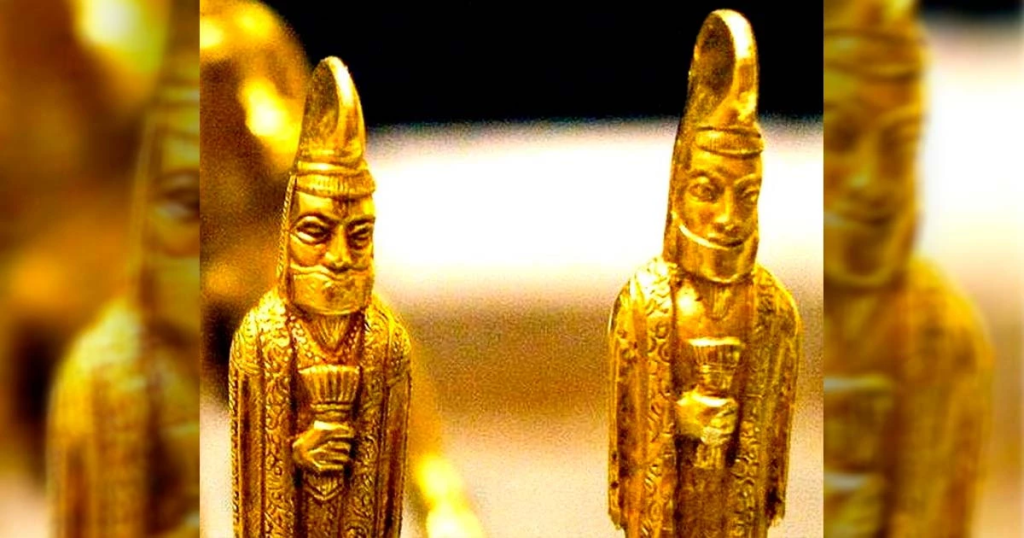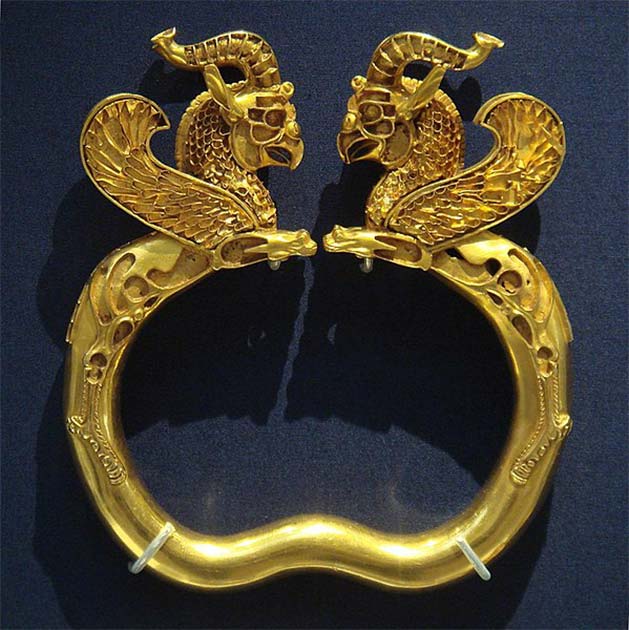The Oxus civilization is also known in the archaeological world as the Bactria-Margiana Archaeological Complex (BMAC) in Central Asia. It has various stages of urban development dating back to 2250 BC.

According to modern geography, the area is mainly located in Margiana in modern Turkmenistan near the Murghab River Delta. Some sites extended as far north as present-day Bactria or Uzbekistan, but these are mostly cemeteries:
They bury the dead here, but they don’t live here.
However, people today know very little about the civilization that once flourished in this ancient world. How did this civilization, one of the greatest in the ancient world, disappear?
The Eras of the Oxus Civilisation
The area was first named after the Old Persian Bakhdi when it was part of the Persian government under Margus rule. Its capital was called Merv, which can still be visited today in southeastern modern Turkmenistan.
Since then, he was called Baxtris in Central Persia and Baxl in New Persia. He is mentioned in Sanskrit texts from the ancient world as Bahlika. The term Bactriane comes from the Ancient Greek Baktriane, which itself is derived from Old Persian. The Oxus civilization has gone through many different ages. They can be characterized as follows:
Regionalization:
This period began in the Anau and Kopet Dag regions in the years about 4,600–4,000 BC before the Bronze Age began from 4,000 BC to 2,800 BC. It was during this period that the population of the area increased. Archaeologist V.M. Masson, who was in charge of an expedition to South Turkmenistan in 1946, claims to have seen signs of migration from central Iran, which brought metallurgical skills as well as other innovations to the region. These people are said to have integrated into the indigenous population. Around 3500 BC. AD, there seems to be a unit of an area designated by two distinct styles of pottery. A colorful style in the West and a more traditional style in the East.

Late Regionalization: as the Early Bronze Age came, the culture of Kopet Dag and Anau seems to have developed into an urban society. Digs have shown this. Altyn-Depe became a major center where pottery was wheel-turned, and grapes were grown.
Integration:
The peak of urban development in this area was reached around the Middle Bronze Age in the following areas:
Kopet Dag, Margiana and Southern Bactria. In Kopet Dag, the main site is called Namazga-Depe and covers an area of about 52 hectares (128 acres) and is inhabited by 17–20,000 people. It is believed to have existed for about 700 years from 2400 BC to 1700 BC.
In Margiana, the main site studied was Kelelli. This has been classified according to the appearance of the first palace buildings appearing around 2400 BC and 2000 BC. Keleli is located about 40 kilometers (25 mi) northwest of Gonur and covers an area of about 4 hectares (10 acres). It has towers and double walls surrounding the structure. It has four equal entrances and houses in the southwestern area of the property.
South of Bactira, near northern Afghanistan, Dashly’s site is considered one of the most important in existence at the time. It can be dated from after 2300 BC to about 1700 BC. This has also been identified as a palace. It was a rectangular solid edifice with two outer walls and a T-shaped corridor surrounded by an L-shaped corridor in the middle of each wall.
The Material Culture
It was found that people living in the BMAC area were sedentary and used irrigated agriculture, usually barley and wheat. Along with this, they created a huge amount of material culture:
No one in the area before or long after has crafted and collected as many “things” as Oxus.
This includes grand architecture, ceramics, bronze tools, and jewelry. At Altyn-Depe, some of the earliest evidence of wheeled transport in Central Asia has been found in two-wheeled vehicles dating to around 3000 BC.
Although it should be noted that there is evidence of the wheel existing elsewhere earlier. In addition, in Altyn-Depe there was a model of a camel-drawn cart dating from 2200 BC. Apart from anything else, this suggests that the animal was clearly domesticated at the time.
In terms of art, Bactrian princesses made from limestone and clay have been found and have been classed as fertility goddesses. This kind of find tends to indicate an agrarian Bronze Age society as does the finds of many metal objects of quite complex designs.

The Bactrian princesses are found wearing dresses that were styled and headdresses that merge with hair. Various figures have been found in different colors but all with intricate designs.
Only one stone seal has been found in Anau with geometric markings. This indicates that this civilization was developing writing.
The seal itself has five marks that resemble the small kanji of the seal. Although only one of the markings on the Anau seal matches the Chinese characters. It is a small jet seal found along the Silk Road, but is believed to date back to 700 BC.
Traders Over Great Distances
BMAC material has been found regionally in various societies such as the Indus Valley, the Iranian Plateau and in the Persian Gulf. This indicates that they are a society engaged in the trade and exchange of cultural artifacts.
For example, an Elamite cylinder has been found at Gonur-depe. In addition, there is evidence that the BMAC culture spread to the Eurasian steppes from around 2000 BC. The water was changed from the Amu Darya plains by people similar to those discovered by the people belonging to the Andronovo culture. This may indicate the disposition of a nomadic culture in this area.
Despite all this, it has been speculated that the Oxus Civilisation collapsed around 1,700 BC. Many of the settlements were abandoned but the materials have continued to be found throughout Iran and in other cultures. But why they fell apart as a people, nobody can say.
Top Image: The Oxus left behind extraordinary treasures, and gave us a clear picture of how they saw themselves. Source: Djarell / CC BY-SA 4.0.






